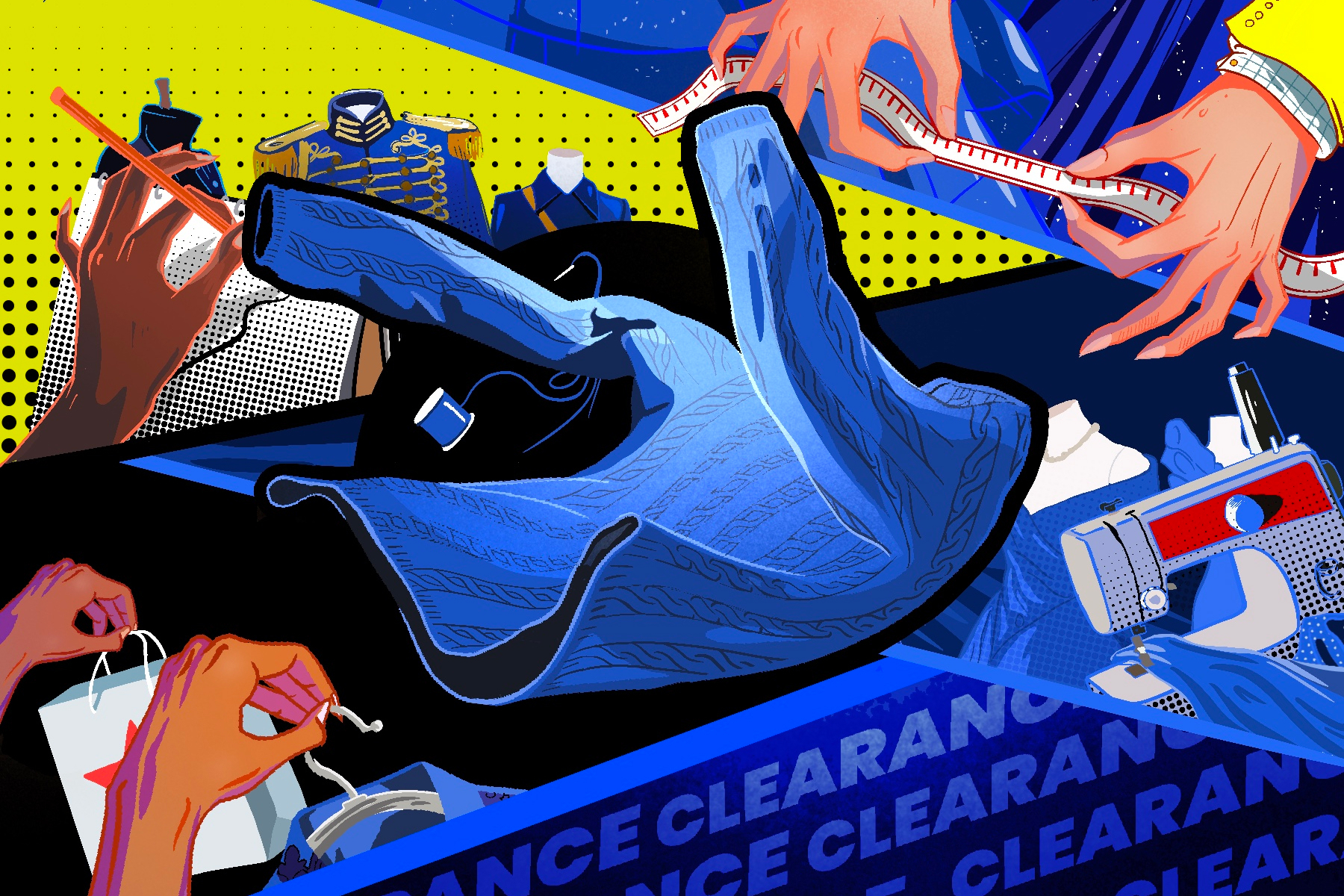This year, June 30 will mark 15 years since the world watched Andrea Sachs stumble into the world of runway fashion. In the movie “The Devil Wears Prada,” Sachs is able to procure a position as assistant to the editor in chief of a major runway magazine. Throughout the film, audiences watch as Sachs transforms from a person who considers themselves above the materialism of the fashion world to someone who embraces, if not allows themselves to be overrun by it. The story of “The Devil Wears Prada” works as a lesson on the boundary between evolving as a person and losing yourself completely. Yet, this is far from what the film has become famous for.
Among other notable scenes in “The Devil Wears Prada,” there is one that has gathered attention once more as a popular audio on TikTok. In this scene, Miranda Priestly, Sachs’ boss, picks up on her arrogance and makes a show of it: Priestly explains that the sweater Sachs wears, no matter how ugly it is, was chosen for her by the people in the room. Now the question is: What did she mean by this?
The process that Priestly refers to in this scene is known as the trickle-down effect in fashion. The idea is fairly simple: It states that fashion trends “trickle” from the runway and high fashion world to the general public. An example of this can be seen in the Yves Saint Laurent Fall 1965 collection. These pieces were characterized by boxy cuts, geometric patterns, and an overwhelming use of black and white with few splashes of color. Interpretations of these designs eventually made their way to JC Penny and “trickled down” until sewing patterns of the dresses were sold for as little as $6.
Outside of the runway, social media has allowed for the trickle-down effect to appear on a smaller scale. Across social media, there has been a trend for some middle-class people to adopt what they consider an affluent and conservative form of dress. The outfits that fall into these categories often include tennis skirts, cardigans, polo shirts, pearl necklaces, etc. While this is far from an interpretation of any recent runway fashion, it serves to buttress the idea that the clothes of those that lack wealth are ultimately some modified version of the fashion worn by the rich.
While there are, indeed, examples of the trickle-down effect as described by Priestly in “The Devil Wears Prada,” the theory has an annoying implication that is hard to dismiss: Fashion is created by the upper classes, and the masses follow. Despite the classist underpinnings of the fashion world, this could not be further from the truth. In reality, much of the designs that have appeared on the runway over the past 40 years have taken inspiration from the general public in one way or another. This is known as the “trickle-up” effect and it is the reason why brands such as Vetements are given the chance to exist on the runway.
Vetements was founded on the idea of taking inspiration from people’s day-to-day wardrobe and transforming it in a way that would appeal to a luxury high fashion audience. Their brand has been extremely successful in this mission and is now recognized as a top streetwear brand — something that is only possible because it draws inspiration directly from the general public. On a smaller scale, the trickle-up effect can also be seen in the history of blue jeans. When jeans were first manufactured, they were associated with hard labor and not fashion. The people who first wore them were farmers, miners and other kinds of laborers. Despite this, jeans eventually became a staple in the American wardrobe. Today you can spend upwards of $1000 on a pair of Gucci blue jeans or little more than $5 on a pair from your local thrift store.
It is important to note that the trickle-down theory and its implications have faced criticism within the fashion community. However, the point remains that it is impossible to discuss these ideas without examining the attitudes they were born out of and contribute to. Elitism and classist attitudes remain both a shackle and a foundation for many high fashion designers. It is the fact that they are built upon these ideas that allows luxury brands to advertise themselves as luxurious. They are catering to an extremely specific audience that is able to spend thousands of dollars on a single accessory or clothing item.
However, the same branding contributes to a double standard that makes the adoption of trends from the general public feel awkward and two-faced. On a small scale, Champion serves as an excellent example of this. The brand was once associated with low incomes and poverty because it was almost exclusively sold at Walmart. However, in 2017, the brand acquired a fame that it hadn’t had since the ’90s as “hypebeast” trends (a subset of streetwear) gained popularity. Since then, the prices and desirability of Champion items have seen a huge increase, and it has since become unattainable for the groups it was originally associated with.
Champion also serves as an example of how, in the end, the trickle-down and the trickle-up effect are both exclusive concepts. The trickle-down effect is exclusive because it implies that trends are only born out of the high fashion world. It espouses the idea that the general public grabs whatever crumbs they can from the designs of the high fashion world and mimics them to the best of their ability.
The trickle-up effect is inclusive at first, as seen in Champion’s case. When the brand first became trendy, it was still accessible to almost anyone. But as the brand gained popularity and became more expensive, it also became less accessible to the groups it was originally associated with. By making it less accessible, the trend became more exclusive — ironic, because the people that were once ostracized for wearing Champion are now unable to buy it anymore.
















